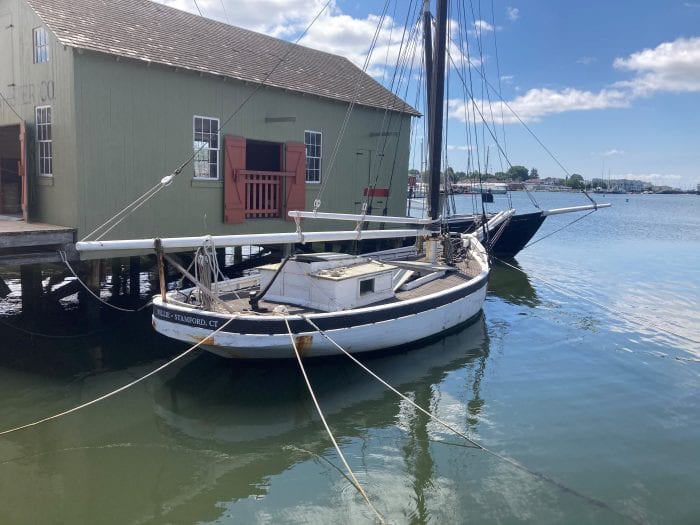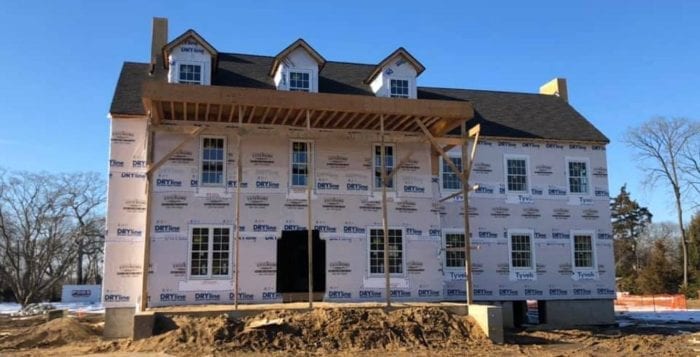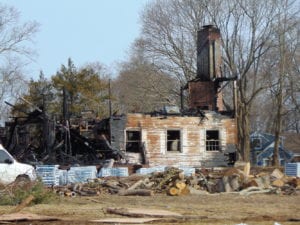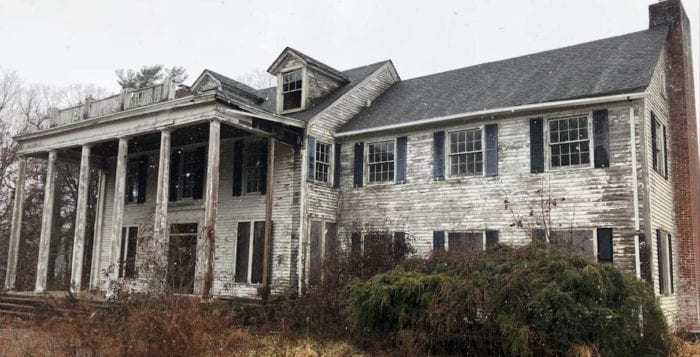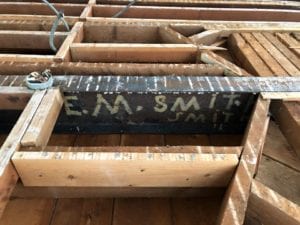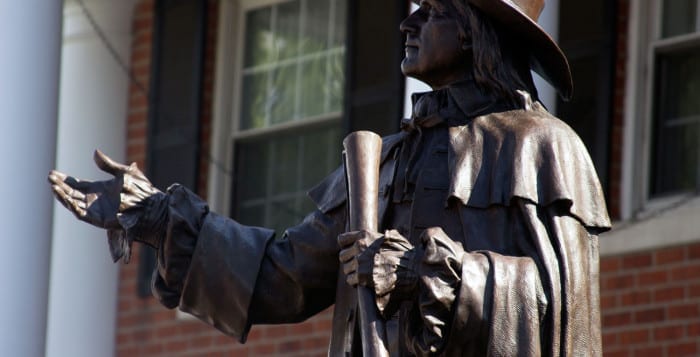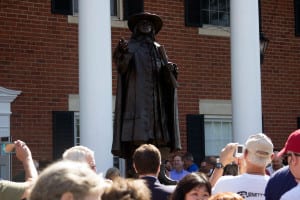By Don Hawkins
The Mystic Seaport Museum in Mystic, Connecticut, is a popular day trip destination via ferry for Long Islanders. It is the largest maritime museum in the United States. Most of the historic buildings were brought there from the New England area to recreate a seaport village.

Mystic Seaport is well known for its large collection of 19th century sailing vessels. One of these vessels is the oyster sloop, Nellie, which was built in Smithtown in 1891 and is prominently displayed in the water alongside the historic Thomas Oyster Co. shucking house. The following is Nellie’s story.
Franklin Darling Hawkins (1847-1933) was a lifelong Smithtown resident, whose paternal and maternal ancestors had deep ties to the Nissequogue River area. He is the acknowledged builder and documented first owner of Nellie (Dec. 19, 1891 to Jan. 17, 1897). Capt. Frank built several small sloops and schooners at his residence on the east bank of the Nissequogue River, including Nellie. Hawkins’ house, built by his grandfather, Gilbert Hawkins, was located on River Road in what is now the Village of Nissequogue. His boat building yard was along the riverfront.
During the seven years that Hawkins owned and captained Nellie, she was based at Port Jefferson Harbor. It is reported that he also moored her in the river at his property. The sloop dredged oysters in the Long Island Sound off the North Shore of the Island using steel basket-like dredges that were hauled onto the deck when full.
Hawkins sold Nellie Jan. 17, 1897, to Josiah Stamps of Central Islip. Stamps moved Nellie over to the oyster-rich Great South Bay off the South Shore of Long Island and based her in Patchogue. Nellie only remained with Stamps for about 3 1/2 years, after which he sold it to James A. Ryle of Stamford, Connecticut, on June 1, 1900.
Ryle renamed the oyster sloop the Nellie A. Ryle and operated her for many years in the Long Island Sound off the Connecticut shoreline. In 1914, Ryle removed Nellie A. Ryle’s mast and rigging, equipped her with an engine and dredged oysters in his private oyster beds. A maritime law, in effect from the 1880s through 1969 prohibited motor power vessels from harvesting oysters in natural growth oyster beds. It was only on privately owned, seeded oyster beds where motorized vessels could be used.
The then current document on Ryle’s ownership of Nellie A. Ryle expired July 26, 1926, when it was surrendered at Bridgeport, Connecticut. The vessel, however, was still documented in the 1963 edition of “Merchant Vessels of the United States.”
It is assumed that the oyster sloop remained with the Ryle family until it was purchased for Mystic Seaport by the Society for the Preservation of the Nellie A. Ryle. The sloop was still seaworthy and operating as a powerboat when Mystic Seaport Museum acquired it in 1964.
The history of Nellie or Nellie A. Ryle brought forward to her new home port at Mystic Seaport was that she was built in Smithtown in 1818 by Slope and Scudder. This information was proved incorrect. The New York Times archival articles from 1964 perpetuated this wrong information, which probably lingered from inaccurate, early Smithtown historical accounts of the oyster sloop.
Not long after Mystic Seaport acquired Nellie A. Ryle, the museum staff questioned her 1818 date. Furthermore, no record existed for a Slope and Scudder shipbuilding firm in Smithtown. The curator of the museum at the time, John Leavitt, contacted the National Archives for the documentation on the oyster sloop.
The National Archives did not have the record of the vessel’s builder, but it did verify Frank Hawkins as the first documented owner in 1891. Hawkins is the presumed but undocumented builder of the Nellie. The Mystic Seaport Museum renamed the oyster sloop the original name of Nellie, acknowledging her origin in Smithtown. The name Nellie appears on both sides of the bow, while the stern has the lettering Nellie-Stamford, CT as a tribute to Nellie’s last home port before arriving at Mystic in 1964.
In 1965 Mystic Seaport replaced Nellie’s missing mast and rigging, based on plans from similar sized oyster sloops. The museum did a restoration on Nellie in 1972 and a second one in 2001. Nellie’s entire deck, most of the ribs and some of the hull planks were replaced in the two restorations. It is estimated that about 40% of Nellie is original, which is remarkable for a vessel that is almost 120 years old.
Hawkins would have spent many months building Nellie. The boards he used were probably cut at the sawmill at the Head of the River in Smithtown. Hand tools such as planes, chisels, adzes and saws were used to shape the boards used for Nellie.
Nellie was obviously well constructed to have endured almost 120 years in the water. The length of the deck is 32 feet, 7 inches with a maximum width of 12 feet, 9 inches. It has a low-sided hull with a distinctive curved stern.
Of the hundreds of oyster sloops that once plied the waters off Long Island, there are only three that still remain afloat: Nellie (1891) at Mystic Seaport; Christeen (1883) at Oyster Bay and Priscilla (1888) at the Long Island Maritime Museum in West Sayville. Each has had extensive restorations.
The question remains as to why Hawkins named his oyster sloop, Nellie. There is the likely possibility that he named the sloop in honor of his father, (Capt.) Edward Nelson Hawkins (1810-1865), who may have had the nickname of Nellie.
Don Hawkins lives in Wading River, and Frank Darling Hawkins is his great, great uncle. The author would like to thank Caren Zatyk at the Long Island Room of the Smithtown Library, who provided him with information on Hawkins’ residence and boat building activity at the Nissequogue River. Also, Maribeth Quinlan at the Mystic Seaport Collections and Research Room for providing him with the museum’s file on Nellie, including National Archives information.

